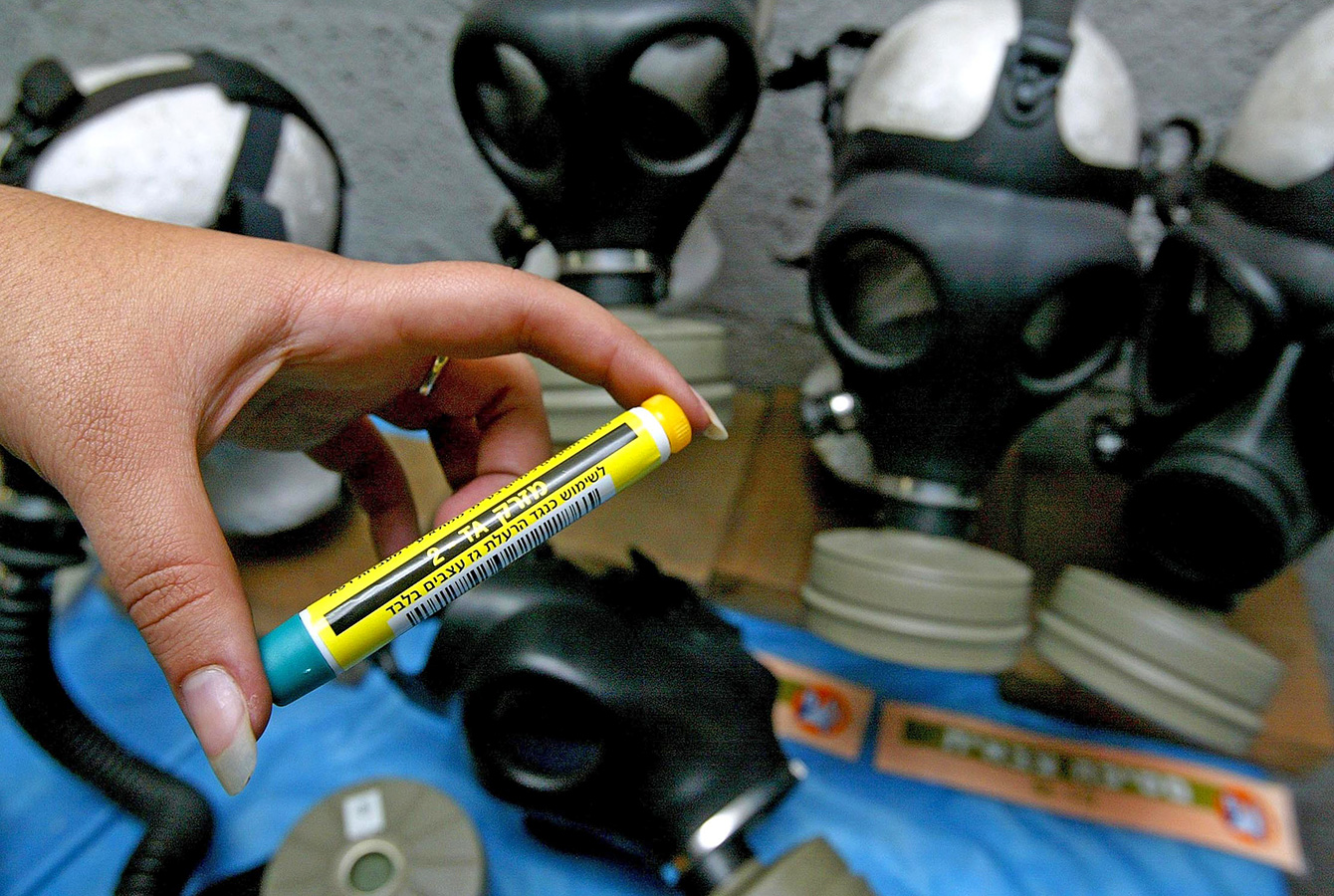Nerve Gas Attack: New Treatment Cleared, But More Drugs Are Needed

After a deadly nerve gas attack in Syria earlier this month, the U.S. government recently authorized use of a new drug injector to treat people exposed to these lethal chemicals. But medical experts say other drugs are needed.
The drug contained in the newly authorized injector is atropine, and the device is manufactured by Rafa Laboratories Ltd., a pharmaceutical company based in Israel, according to Lauren Smith Dyer, a spokeswoman for the U.S. Food and Drug Administration (FDA). The injector received the FDA's "emergency use authorization," meaning it is not approved for general use but can be used in an emergency, Smith Dyer told Live Science in an email.
Approval for the new atropine injector is helpful, but it's crucial that the FDA also focus on approving other drugs that work in different ways from atropine to treat people exposed to nerve gas, said Dr. Lewis Nelson, the chairman of emergency medicine at Rutgers New Jersey Medical School. [7 Facts About the Deadly Nerve Agent Sarin]
Atropine works by blocking acetylcholine receptors, preventing their overstimulation. This overstimulation is the primary way that nerve agents kill.
However, a better treatment for people exposed to nerve agents is pralidoxime, or 2-PAM, which removes the nerve agent from the molecule that it binds to, halting the buildup of acetylcholine that causes the overstimulation the first place, Nelson said. This drug is approved, and injectors have been made that contain both pralidoxime and atropine; however, those injectors are no longer available on the market.
A third drug, called midazolam, which is an anticonvulsant, is showing potential in clinical studies, but the drug is not approved by the FDA for nerve gas treatment.
Nelson said spending time and money to approve midazolam is crucial, "because for nerve agent [exposure], atropine is not really the operative agent" in treating people.
Sign up for the Live Science daily newsletter now
Get the world’s most fascinating discoveries delivered straight to your inbox.
"It's really the pralidoxime, and we need midazolam," he told Live Science.
The auto-injector that can dispense atropine along with pralidoxime has experienced a production shortage, according to news reports. This auto-injector "is not currently available for purchase at this time," Smith Dyer said, adding that the new emergency authorization was critical for addressing "preparedness and stockpiling requirements for chemical nerve agent threats."
Tom Price, the head of the U.S. Department of Health and Human Services, said the authorization of the new injector was needed because "there is a significant potential for a public health emergency," that could affect U.S. citizens living abroad, according to an order he signed on April 11.
What is atropine?
Atropine, pralidoxime and midazolam are three antidotes that can treat people exposed to nerve agents, which belong to a group of chemicals called organophosphates, Nelson said.
Nerve agents target an enzyme that turns off acetylcholine, a molecule that sends signals to the nerves. When this enzyme is out of commission, acetylcholine can continuously stimulate certain receptors on nerve cells, Nelson said. This can lead to excess fluid release in the body, such as excess salivation, urination and diarrhea (symptoms typically associated with organophosphate insecticide exposure), and muscle paralysis and death (symptoms usually associated with nerve agent exposure). [5 Lethal Chemical Warfare Agents]
Atropine blocks acetylcholine receptors, but it works better on people exposed to insecticides that contain organophosphates, rather than people exposed to nerve agents, Nelson said.
"I don't think [the new auto-injector] is going to make a substantial impact on the treatment of people with nerve agent poisoning," Nelson told Live Science. "Having atropine [is] conceptually good, but it's not the antidote half that we need. We really need the pralidoxime half."
To stop seizures in people exposed to nerve agents, doctors can currently use diazepam (brand name Valium). However, Valium is more effective given intravenously (IV) than in an auto-injector. The advantage of using midazolam instead of Valium is that midazolam appears to work just as well when delivered with an auto-injector, Nelson said.
Time is valuable during a nerve gas attack, as these antidotes must be given quickly, within about 10 minutes if possible, he said. So, an injector would trump an IV, which takes more time to set up, Nelson said.
What's more, animal studies have shown that midazolam is a good treatment for nerve gas poisoning, and clinical trials are underway for studies in people, according to Bloomberg.
Smith Dyer noted that the FDA's authorization of the new atropine injector is not an indication that a chemical nerve agent attack in the United States is imminent. Rather, the government "is taking these actions for preparedness purposes only at this time to help ensure an adequate supply of atropine auto-injectors," Smith Dyer said.
Original article on Live Science.

Laura is the archaeology and Life's Little Mysteries editor at Live Science. She also reports on general science, including paleontology. Her work has appeared in The New York Times, Scholastic, Popular Science and Spectrum, a site on autism research. She has won multiple awards from the Society of Professional Journalists and the Washington Newspaper Publishers Association for her reporting at a weekly newspaper near Seattle. Laura holds a bachelor's degree in English literature and psychology from Washington University in St. Louis and a master's degree in science writing from NYU.
What are mRNA vaccines, and how do they work?
Deadly motor-neuron disease treated in the womb in world 1st











